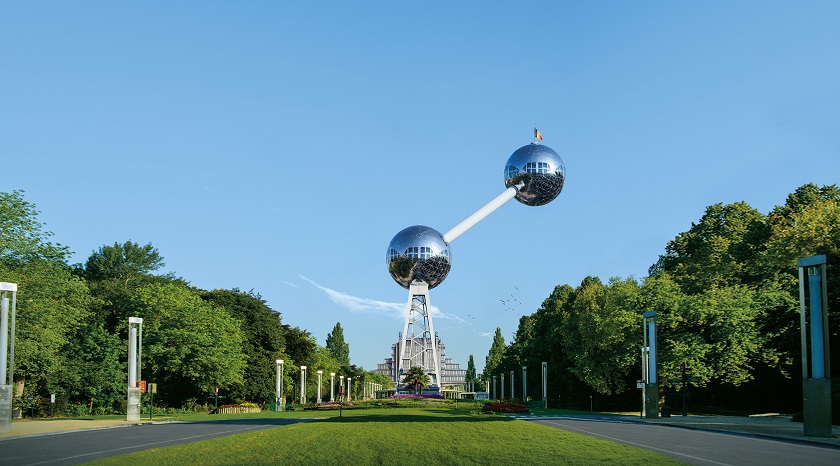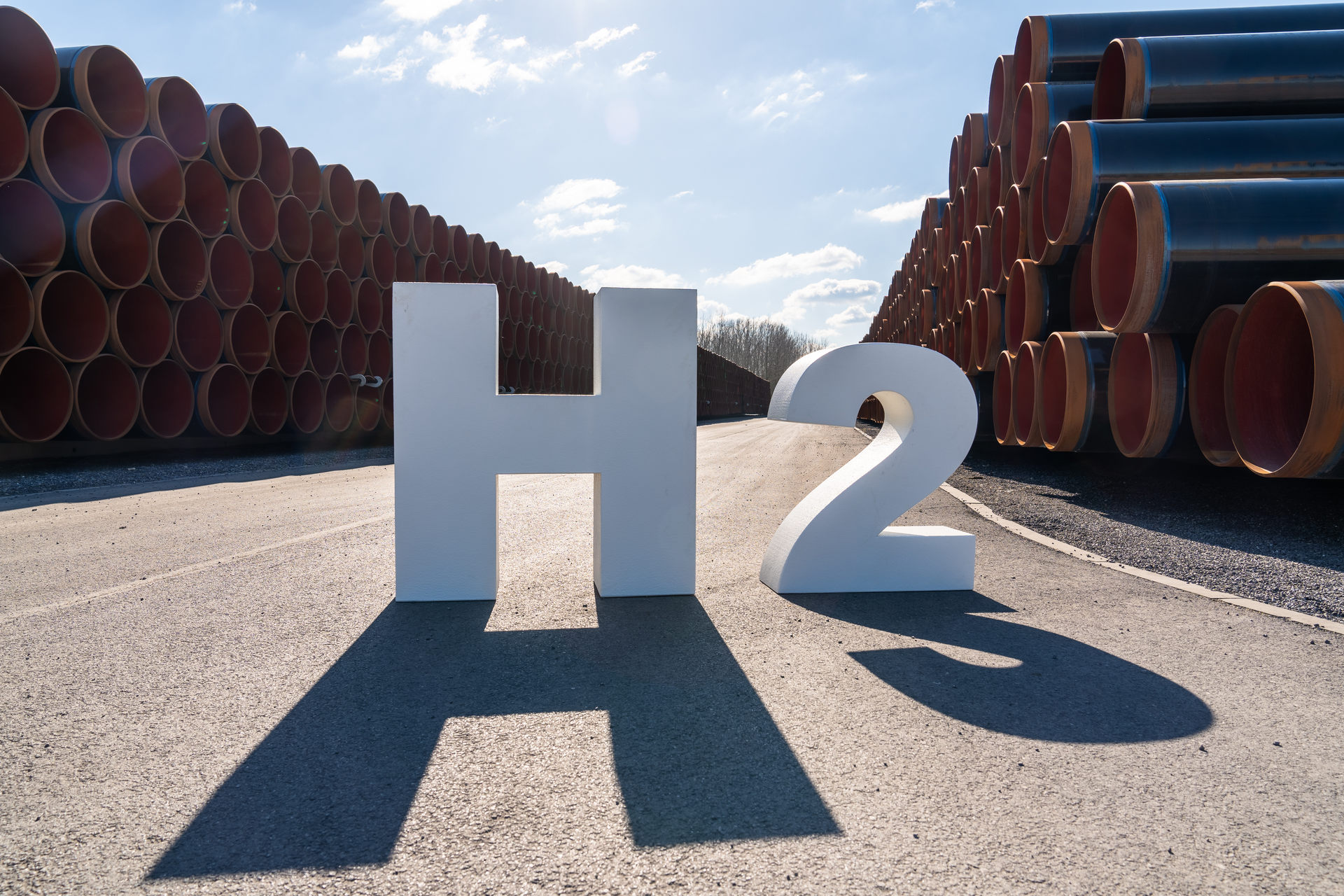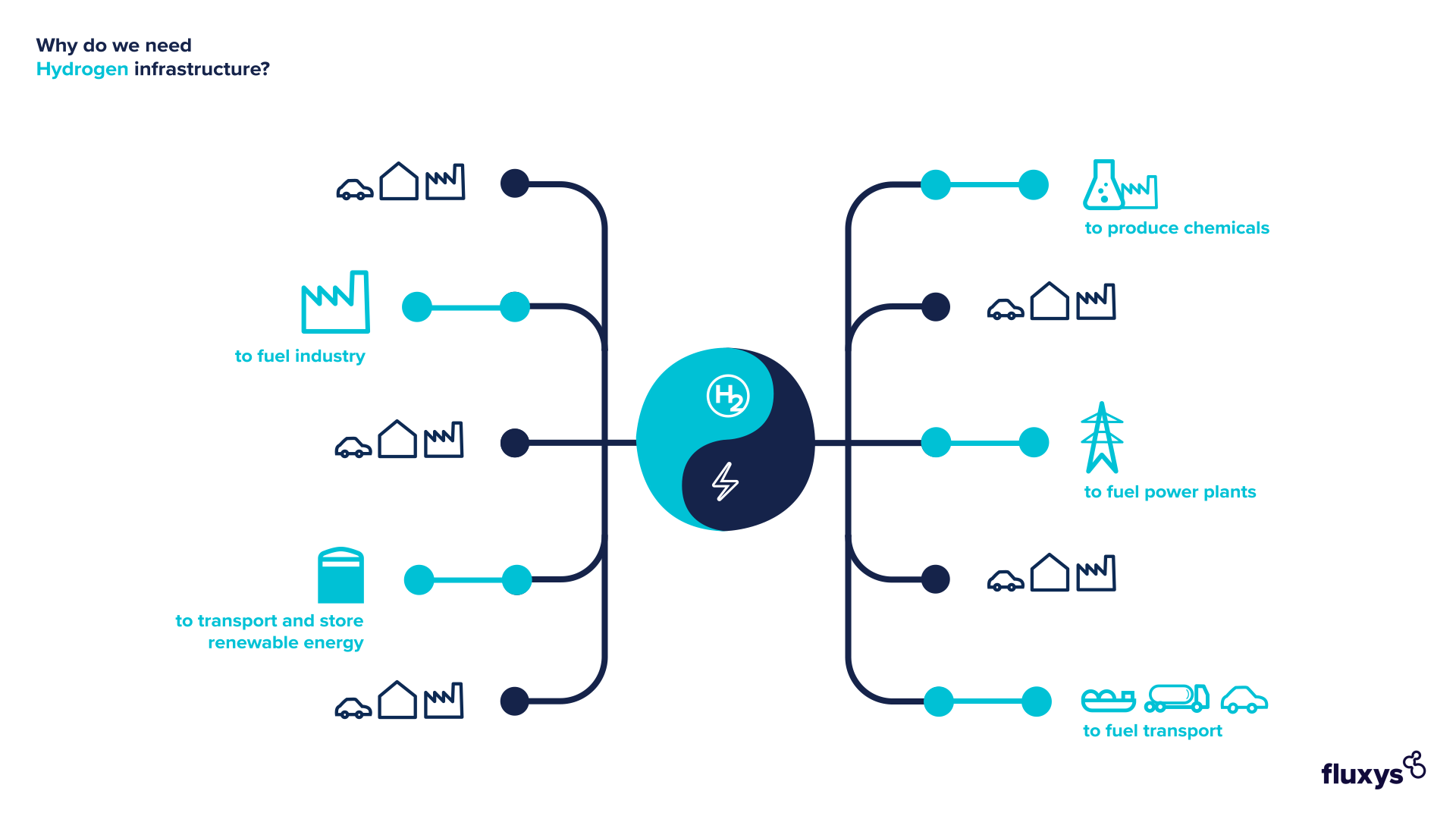Wasserstoff

We are in the midst of an energy transition. The way we generate, transport and use energy is evolving rapidly and hydrogen is emerging as a key enabler of this transformation. As a green, flexible energy carrier, hydrogen plays a vital role in decarbonising key industrial sectors.
Through our extensive and reliable network of pipelines, we can bring hydrogen (H₂) to industrial users, helping to balance energy systems and support climate goals.
We want to offer the first hydrogen transport capacity when the market is ready, which would mark a crucial step toward a climate-neutral economy and society. This is more than a technological shift; it’s a commitment to a sustainable future, powered by a new range of energy molecules.
What is hydrogen?
Hydrogen is a molecule whose chemical formula is H₂. It is the most common chemical element on earth and throughout the universe. There is more than enough of it, although the molecule is not found by itself in nature. Energy can be used to split hydrogen off from other molecules, such as water (H₂O) or natural gas (CH₄).
When a water molecule is exposed to a high power in an electrical (electrolytic) cell or electrolyser, the hydrogen portion splits off from the oxygen.
Cracking methane to extract hydrogen involves breaking its molecular bonds at high temperatures, typically using thermal or catalytic processes. This reaction produces hydrogen gas and solid carbon, offering a low-emission pathway for hydrogen production.
The colours of hydrogen
Hydrogen actually exists in virtually every colour of the rainbow. The colourless gas does not actually change colour; the colour associated with it indicates how the gas was produced, so we speak of grey, blue, green, pink, turquoise or white hydrogen.

The role of hydrogen
Hydrogen is considered an energy carrier (i.e. a transformed form of primary energy that allows the latter to be transported and stored). That energy is released during combustion.
Hydrogen combustion produces no CO₂ emissions when used in its pure form, making it a clean alternative for sectors that are difficult to electrify. Its versatility allows it to be used across a wide range of applications, from industrial processes, power generation and energy storage. As such, hydrogen plays a pivotal role in decarbonising the energy system. This makes it a cornerstone of the broader European strategy to build a climate-neutral economy.
Towards a climate-neutral economy
Fossil fuels such as coal, oil and natural gas have created enormous prosperity, but burning them releases huge amounts of CO2 into the atmosphere. An energy transition is essential if we are to stop global warming and climate change.
We will replace fossil fuels with energy sources that do not produce greenhouse gases (GHG), such as solar and wind power. Electrification of, among other things, cars and heat pumps with renewable energy will play a crucial role here.
Why is hydrogen necessary?
Renewable energy, such as sun and wind, is not available in unlimited quantities. As the European Commission's projections for 2050 show, a net-zero energy system is likely to be built on carbon-neutral electricity and carbon-neutral molecules such as hydrogen, biomethane, synthetic methane and biofuels.
As companies seek to strike a balance between security of supply, climate impact and cost efficiency, hydrogen often emerges as the best option. In addition, there are industrial processes for which electrification is not an option. For example, the cement and steel industries rely on coal and natural gas to heat blast furnaces, something electricity cannot achieve, but hydrogen can. This makes hydrogen an important link on the path towards a climate-neutral economy.
Diversity is key to the energy future – including both green electricity and carbon-neutral molecules in their various forms. This means electrification with green power where possible and clean molecules where this is more appropriate, taking into account cost, security of supply and the reduction of CO₂ emissions.
How does hydrogen reduce industry’s CO2 emissions?
CO2 emissions must be drastically reduced, including in industry. Fortunately, there are solutions. Hydrogen has clear potential for enabling industrial companies to transform production processes and make them climate-neutral.
Towards climate-neutral industry in Belgium
For such a small country, Belgium has a large industrial sector. Many large industrial players are active here and create local employment and prosperity. At the same time, industry is responsible for 40% of Belgium's CO2 emissions, which is why companies are launching all kinds of initiatives and innovations to reduce their emissions. These efforts include upgrading machinery and equipment, optimising production processes, insulating buildings and so on. These investments have a positive impact on the climate and on companies’ expenditure: their energy bills will go down and fewer emissions will also mean they spend less money on emission rights per million tonnes of CO2 emitted.
The inevitable (process-related) CO2 still emitted by heavy industry can be captured and stored or reused (CCUS). This is how companies reduce CO2 emissions on a large scale.
Europe all in on the hydrogen economy
The European Union is making bold strides to establish a thriving hydrogen economy as part of its broader climate-neutral and energy transition goals. Central to this effort is the REPowerEU Plan, which aims to produce and import 10 million tonnes of renewable hydrogen annually by 2030.
To support this ambition, the EU has launched several initiatives to channel public and private funding toward hydrogen technologies, infrastructure, and industrial applications.
Complementing these initiatives is the European Hydrogen Bank, designed to bridge investment gaps and accelerate market development.
These coordinated efforts reflect the EU’s commitment to decarbonising industry and transport, reducing reliance on fossil fuels, and positioning Europe as a global leader in clean hydrogen innovation.
Our hydrogen infrastructure projects
At the heart of Europe’s energy transition, we are building the backbone for a climate-neutral economy; an integrated hydrogen infrastructure within Belgium connecting to key European hubs. Our projects are designed to accelerate the shift to sustainable energy and support industries in their decarbonisation journey.
We are developing a pipeline network to transport hydrogen safely and efficiently across borders, connecting strategic locations. Our facilities will ensure seamless import, export, and handling of hydrogen, to provide the flexibility and resilience needed to balance supply and demand.
Together with partners and stakeholders, we are shaping a hydrogen-ready Europe.
